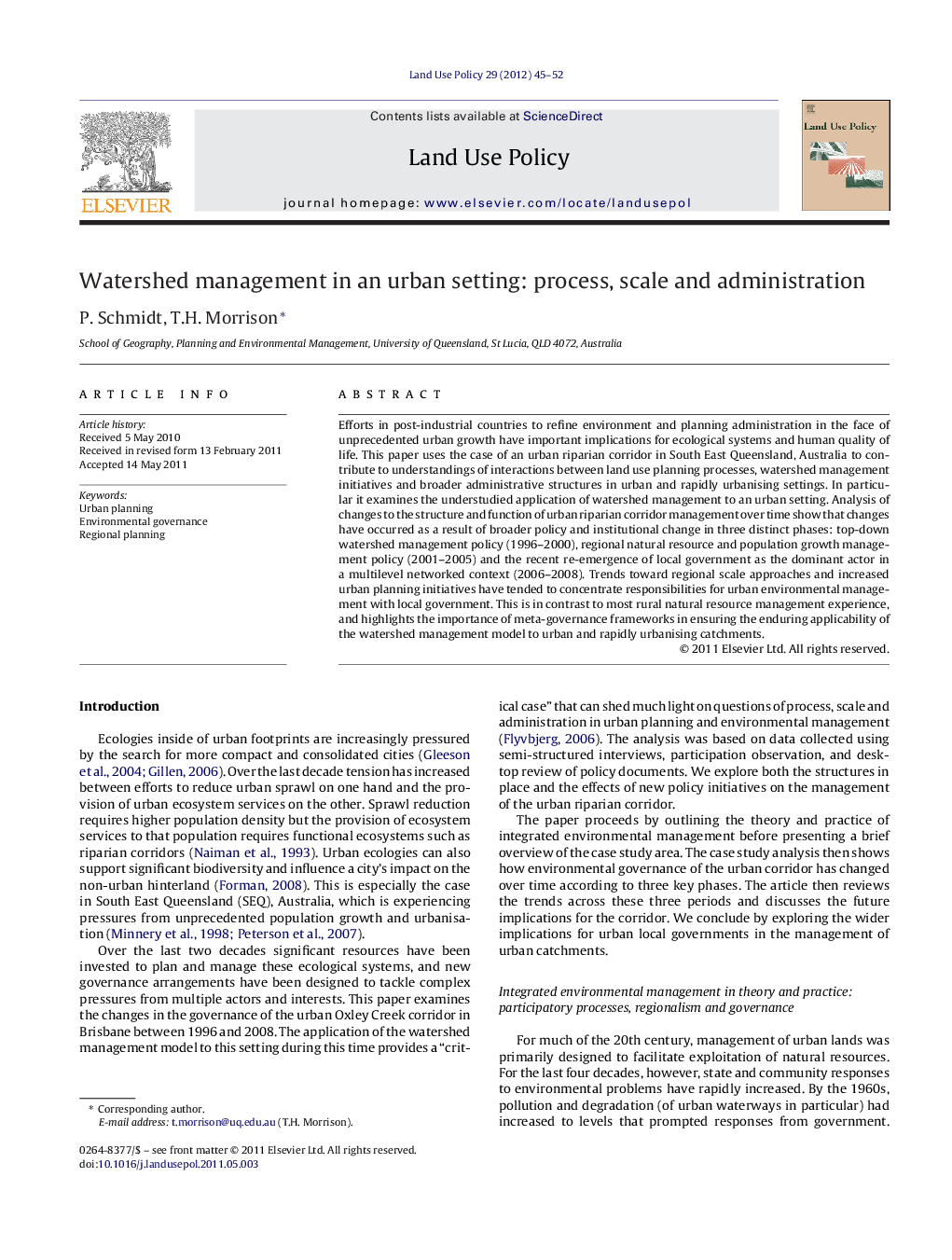| Article ID | Journal | Published Year | Pages | File Type |
|---|---|---|---|---|
| 93398 | Land Use Policy | 2012 | 8 Pages |
Efforts in post-industrial countries to refine environment and planning administration in the face of unprecedented urban growth have important implications for ecological systems and human quality of life. This paper uses the case of an urban riparian corridor in South East Queensland, Australia to contribute to understandings of interactions between land use planning processes, watershed management initiatives and broader administrative structures in urban and rapidly urbanising settings. In particular it examines the understudied application of watershed management to an urban setting. Analysis of changes to the structure and function of urban riparian corridor management over time show that changes have occurred as a result of broader policy and institutional change in three distinct phases: top-down watershed management policy (1996–2000), regional natural resource and population growth management policy (2001–2005) and the recent re-emergence of local government as the dominant actor in a multilevel networked context (2006–2008). Trends toward regional scale approaches and increased urban planning initiatives have tended to concentrate responsibilities for urban environmental management with local government. This is in contrast to most rural natural resource management experience, and highlights the importance of meta-governance frameworks in ensuring the enduring applicability of the watershed management model to urban and rapidly urbanising catchments.
► We examine watershed management in a highly urbanised environment. ► We examine changes in participation, scale and governance over time. ► Local government emerges as the critical actor. ► Local government mediates relations between land stewardship and property values. ► The urban watershed management model is dependent upon effective local government.
